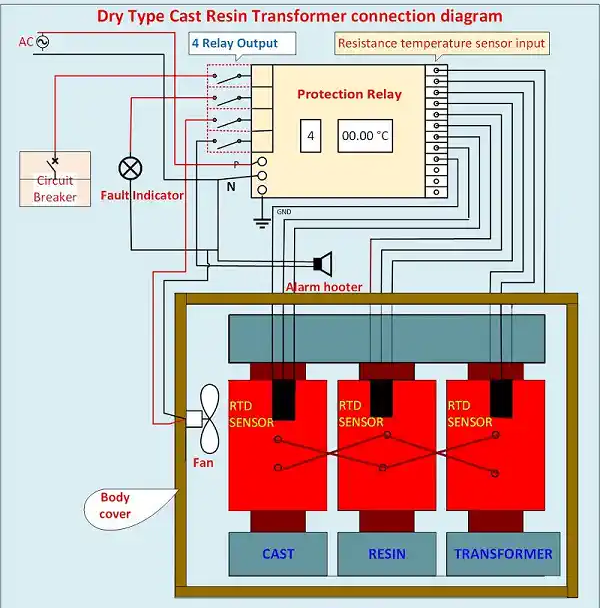What Is the Difference Between a Generator and Transformer
Two essential power devices serve different roles – while generators create electricity, transformers modify voltage levels for efficient distribution.

Dry-type transformer Symbols models typically consist of a combination of letters and numbers, each representing specific technical characteristics. Below is an example and breakdown:
Other letter arrangement order and meaning of Dry-Type Transformer Symbols
(1) Winding coupling method: ** (not marked); self-coupling (indicated by O).
(2) Number of phases: single phase (D); three phase (S).
(3) Winding external insulation medium: transformer oil (not marked); air (G); gas (Q); molded solid casting type (C); wrapping type (CR); flame retardant liquid (R).
(4) Type of cooling device: natural circulation cooling device (not marked); air cooler (F); water cooler (S).
(5) Oil circulation method: natural circulation (not marked); forced oil circulation (P).
(6) Number of windings: double winding (not marked); triple winding (S); double split winding (F).
(7) Voltage regulation method: no-excitation voltage regulation (not marked); on-load voltage regulation (Z).
(8) Coil conductor material: copper (not specified); copper foil (B); aluminum (L); aluminum foil (LB).
(9) Core material: electrical steel sheet (not specified); amorphous alloy (H).
(10) Special purpose or special structure: sealed (M); series connection (C); starting (Q); lightning protection (B); capacity adjustment (T); high impedance (K); ground station traction (QY); low noise (Z); cable lead-out (L); isolation (G); capacitor compensation (RB); oil field power lighting (Y); plant transformer (CY); fully insulated (J); synchronous motor excitation (LC).
The connection method of dry-type transformers is often represented by codes like “Dyn11.” Below is a breakdown of common symbols:
| Symbol | Meaning | Features |
|---|---|---|
| Y | Star connection | Includes neutral point, suitable for three-phase four-wire systems |
| D | Delta connection | No neutral point, ideal for balanced loads |
| n | Neutral point lead-out | Provides zero line |
| 11 | Clock notation | Secondary voltage leads primary voltage by 30° |

The nameplate on a dry-type transformer contains essential parameters that help buyers understand its performance:
Choose the right product based on symbols: